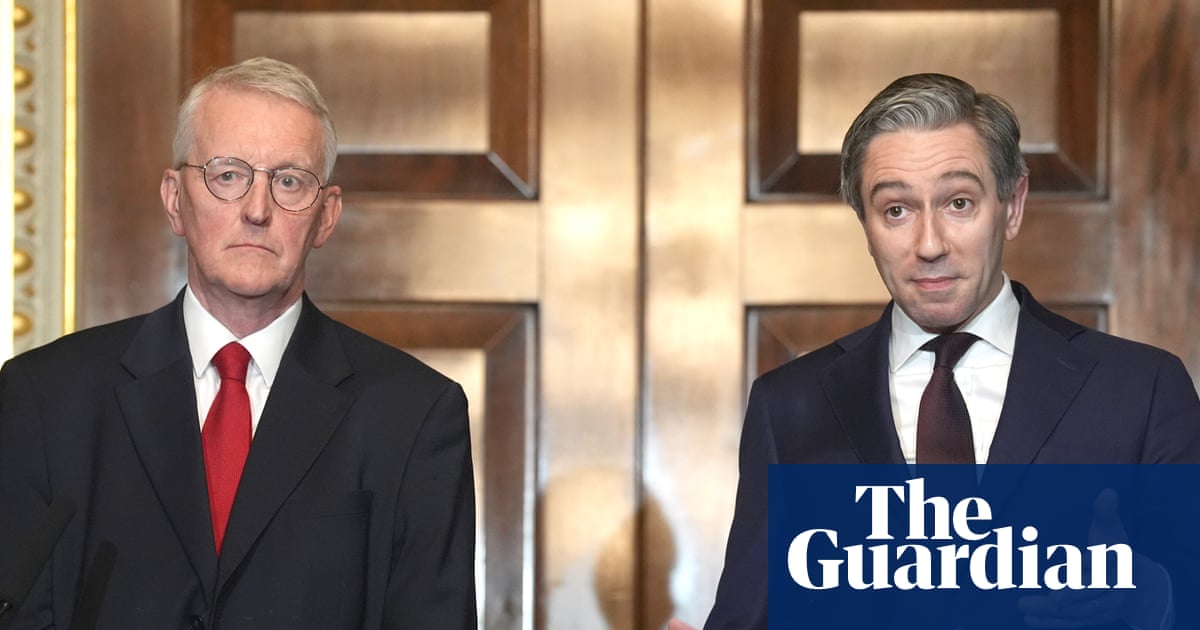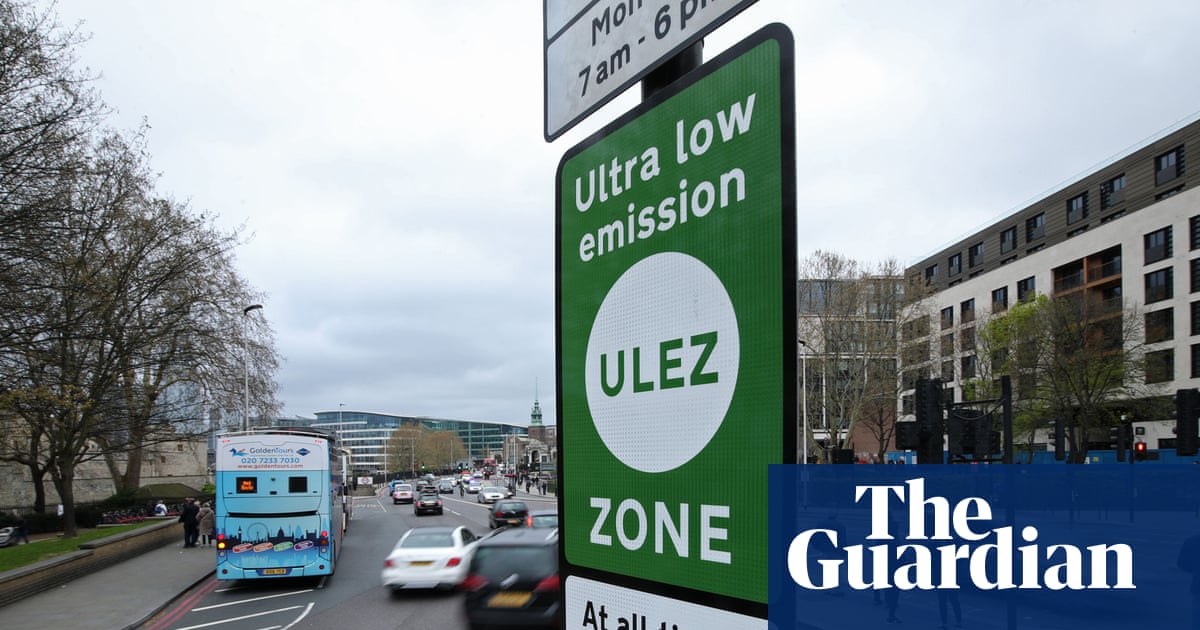UK economy shrank in April
Newsflash: The UK economy shrank in April, as companies were buffeted by Donald Trump’s trade war and higher taxes.
The latest GDP report, just released, has confirmed T.S. Eliot’s line that “April is the cruellest month”.
The economy shrank by 0.3% during April, the Office for National Statistics reports, a bigger fall than expected, and one which may fuel concerns that the economy is weakening.
April begin with Donald Trump announcing large tariff increases on US trading partners, but was also the month when UK employers started paying higher national insurance contributions.
The ONS says services output fell by 0.4% in April 2025, following growth of 0.4% in March 2025, and was the largest contributor to the fall in GDP in the month.
Production output also decreased, by 0.6%, but construction output rose by 0.9% in April.
Key events Show key events only Please turn on JavaScript to use this feature
Legal and estate agent firms suffered from April's stamp duty changes
The increase in stamp duty payments at the start of April may also have hit growth.
Those changes meant housebuyers in England and Northern Ireland faced paying thousands of pounds more in stamp duty unless they competed their deals by the end of March – creating a cliff edge.
ONS Director of Economic Statistics Liz McKeown explains:
“The economy contracted in April, with services and manufacturing both falling. However, over the last three months as a whole GDP still grew, with signs that some activity may have been brought forward from April to earlier in the year.
“Both legal and real estate firms fared badly in April, following a sharp increase in house sales in March when buyers rushed to complete purchases ahead of changes to Stamp Duty. Car manufacturing also performed poorly after growing in the first quarter of the year.
“In contrast April was a strong month for construction, research and development and retail, with increases in these only partially offsetting falls elsewhere.
UK economy shrank in April
Newsflash: The UK economy shrank in April, as companies were buffeted by Donald Trump’s trade war and higher taxes.
The latest GDP report, just released, has confirmed T.S. Eliot’s line that “April is the cruellest month”.
The economy shrank by 0.3% during April, the Office for National Statistics reports, a bigger fall than expected, and one which may fuel concerns that the economy is weakening.
April begin with Donald Trump announcing large tariff increases on US trading partners, but was also the month when UK employers started paying higher national insurance contributions.
The ONS says services output fell by 0.4% in April 2025, following growth of 0.4% in March 2025, and was the largest contributor to the fall in GDP in the month.
Production output also decreased, by 0.6%, but construction output rose by 0.9% in April.
Resolution Foundation: Britain turning into a National Health State
Britain is slowly turning into a “National Health State”, as lower-income families gain most from Wednesday’s spending review.
That’s the conclusion of the Resolution Foundation, the think tank, which has been busy analysing Rachel Reeves’s announcement yesterday.
They found that health accounted for 90% of the extra public service spending announced, meaning half of public service spending is set to be on health by the end of the decade.
They also predict that Reeves may need to look at tax rises in the autun budget, due to the “weaker economic outlook and the unfunded changes to winter fuel payments”.
Here are their key findings:
-
An NHS state... Yesterday’s NHS-dominated settlement continues a pattern of recent Spending Reviews, which has led to a major reshaping of the state. By the end of the decade (2028-29), the health service will account for half (49 per cent) of all day-to-day public service spending controlled by Westminster – up from a third (34 per cent) in 2009-10.
The NHS has again grabbed the lion’s share (90 per cent) of the extra funding for day-to-day public services allocated at the Spending Review,.
Spending on the rest of day-to-day public services will fall slightly (by 1.3 per cent on average) in real, per-person terms by the end… pic.twitter.com/mnwzagCrQr
-
…and shrunken public services elsewhere. While real, per-person funding for health has increased by 36 per cent between 2009-10 and 2028-29, it has fallen by 16 per cent for Justice, 31 per cent for Work and Pensions, and 50 per cent for Housing, Communities and Local Government over the same period.
-
Defence dominates infrastructure plans while total non-defence investment sees cuts. The £9.7 billion a year increase in capital spending between 2025-26 and 2029-30 includes an increase of £5.9 billion of financial transactions (primarily loans), with around two-fifths of the Warm Homes Plan now being funded by loans rather grants. Once these financial transactions are stripped out, the £7.4 billion a year increase in defence contrasts sharply with the £3.6 billion cut to real investment across all other departments.
-
The rise, fall and rise again of public service spending. Real day-to-day spending is now rising again in the 2020s (2019-20 to 2028-29) by 2.2 per cent a year, following a 0.5 per cent fall per year in the 2010s (2009-10 to 2019-20). In the decade prior to that, spending rose by 4.3 on average each year (2001-02 to 2009-10).
-
Lower-income families get a benefits-in-kind boost. The extra funding for hospitals, schools and the police relative to plans set out by the previous Government will deliver important benefits-in-kind to families. The Foundation estimates that a middle-income household will gain £1,400 on average for extra public service provision (in 2028-29), rising to £1,7000 for the poorest fifth of families.
-
From a summer of spending to another autumn of tax rises? The large increase in public spending has been funded in large part by the £39.7 billion of tax rises (in 2028-29) announced in the Budget last Autumn and £3.6 billion of benefit cuts (in 2028-29) announced in the Spring Statement – equivalent to £1,550 for every family in Britain. But the combination of a weaker economic outlook, an unfunded spending commitment on Winter Fuel Payments, and just £9.9 billion of headroom against the Chancellor’s fiscal rules, mean further tax rises are likely to be needed this autumn.
House price surge over last 20 years, Zoopla report shows

Hilary Osborne
Data from Zoopla this morning has confirmed what we have all known for a while: house prices have rocketed over the past two decades. Figures from the listing site show the average price of a UK home has risen by 74% since 2005.
Its analysis of the cost of homes found the average price had gone from £154,300 in April 2005 to £268,200 in the same month of this year.
Although for a while wage increases lagged house prices, Zoopla said over the 20-year period price to earnings ratios had remained broadly the same, with properties changing hands for 6.4 times incomes.
However, the headline figures disguise big differences around the UK. In the south London borough Merton, Zoopla said prices increased by 147% over the period, from £228,600 to £563,800 – this was the biggest percentage increase in the country. In cash terms, the biggest rise was also in London, this time in Kensington & Chelsea – where the average price increased by 124% over the period, from £504,000 to £1.13m.
London boroughs took up 18 of the top 20 spots and seven recorded price growth of more than 130%. Spelthorne in Surrey was the first place outside London, with an increase of 112% from £206,800 to £439,100.
At the other end of the spectrum were several areas in the north of England which recorded growth of just 22%. In Sunderland, prices were up by 22%, going from £101,600 to £124,000. Prices in Darlington and County Durham rose by the same percentage, but by more in cash terms.
Toby Leek, president of NAEA (National Association of Estate Agents) Propertymark, says:
“Across the country, homeownership in general is becoming increasingly difficult to achieve.
Ultimately, we need additional support for first-time buyers, a review of stamp duty, and more homes to be built to keep pace with growing demand. These must be designed with amenities and infrastructure as an integral part of the process.”
Introduction: UK GDP report coming up
Good morning, and welcome to our rolling coverage of business, the financial markets, and the world economy.
We’re about to learn how the UK economy fared during “Awful April”.
The latest GDP report, due at 7am BST, will show whether or not the UK managed to keep growing during a month dominated by Donald Trump’s trade war, which also brought a jump in bills for consumers, and the rise in employer national insurance contributions.
Economists predict a slowdown – indeed, the consensus forecast among City number crunchers is that GDP fell by 0.1% in April.
That would be a disappointment, after the UK economy made a decent start to 2025, growing by 0.7% in the first quarter of the year.
Deutsche Bank predict the economy stagnated in April, with their chief UK economy Sanjay Raja explaining:
By all accounts there are likely to be some volatile swings – particularly when it comes to manufacturing. Some negative pay-back in the services sector too, we think, is very possible.
The good news? Better weather will have likely helped output in general, especially within consumer-facing services.
So far this year, the UK economy was flat in January, then grew by 0.5% in February, and by 0.2% in March.
Investors will also be digesting yesterday’s UK spending review, in which chancellor Rachel Reeves outlined billions of pounds of infrastructure spending. Health and defence were the priority, but other areas will face a tough squeeze on funding.
The agenda
-
7am BST: UK GDP report for April
-
7am BST: UK trade balance for April
-
1.30pm BST: US weekly jobless claims report
-
1.30pm BST: US PPI index of producer prices for May

 3 months ago
134
3 months ago
134

















































